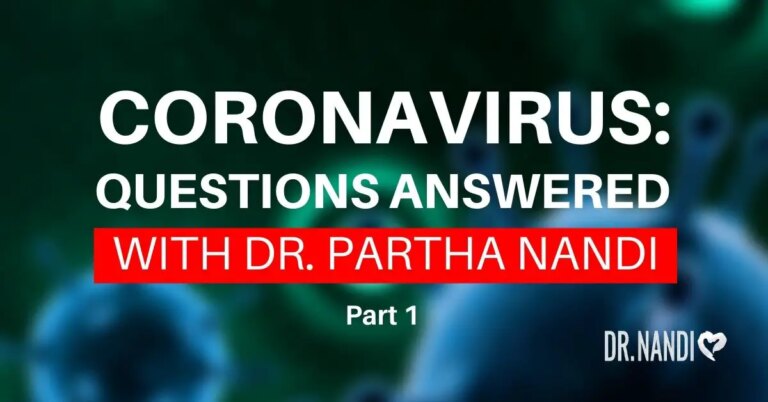Scientists at Michigan State University have discovered something remarkable: Oxytocin, the hormone released during bonding, childbirth, and intimacy, can trigger heart muscle regeneration after injury. Published in Frontiers in Cell and Developmental Biology, this groundbreaking research demonstrates that oxytocin stimulates the migration of stem cells in the heart’s outer layer, enabling them to develop into new heart muscle cells. While most people know oxytocin as the “love hormone” that promotes social bonds and feelings of connection, researchers have found that it has an entirely different superpower when heart tissue is damaged.
Heart Attacks Kill Billions of Cells
Heart attacks destroy massive numbers of heart muscle cells called cardiomyocytes—sometimes more than 25% of these essential cells die during a single cardiac event. Unlike skin or liver cells, which can regenerate themselves, heart muscle cells are highly specialized and cannot replace themselves once they are destroyed. When cardiomyocytes die, your heart typically forms scar tissue instead of new working muscle.
Scar tissue doesn’t contract like healthy heart muscle, which means your heart becomes weaker and less efficient at pumping blood throughout your body. Over time, this damage can lead to heart failure, a condition where your heart cannot meet your body’s circulatory demands. Current treatments focus on preventing further damage rather than regenerating lost tissue.
Heart disease remains the leading cause of death in developed countries, and searching for regenerative treatments is a medical priority. Traditional approaches like medications, stents, and bypass surgery can restore blood flow, but cannot bring dead heart muscle back to life. Scientists have long sought ways to trigger natural healing processes that could regain heart function after injury.
Zebrafish Hold Regeneration Secrets
Zebrafish possess extraordinary regenerative abilities that surpass those of human healing. These small freshwater fish can regrow their hearts even when predators bite away up to 25% of the organ. Unlike humans, who form permanent scars, zebrafish completely restore lost heart tissue through rapid cell division and stem cell activation.
When zebrafish hearts get damaged, their epicardium-derived progenitor cells spring into action much more efficiently than human cells do. These specialized stem cells migrate from the heart’s outer layer into the damaged areas and transform into new heart muscle cells, blood vessels, and other essential cardiac structures. The entire regeneration process happens remarkably quickly and thoroughly.
Scientists studied zebrafish to identify the “magic bullet” that triggers such efficient heart regeneration. They discovered that within three days after heart injury, zebrafish brains increase oxytocin production by up to 20-fold. The hormone then travels through the bloodstream to the damaged heart, where it binds to receptors on epicardial cells.
Oxytocin binding triggers a molecular cascade that activates these dormant stem cells, stimulates their proliferation, and directs their differentiation into the specific cell types required for heart repair. This brain-to-heart communication system represents a sophisticated biological program for coordinating regenerative responses throughout the body.
Human Hearts Respond to Oxytocin Too
Researchers investigated whether oxytocin could activate human heart stem cells, similar to its effect in zebrafish. Using human-induced pluripotent stem cells grown in laboratory cultures, they exposed epicardial cells to oxytocin and 14 other hormones to determine which ones might stimulate regenerative activity.
Oxytocin produced the strongest response, increasing human epicardial cell proliferation by up to twice the normal rate. No other hormone tested came close to matching oxytocin’s effectiveness at activating these crucial repair cells. The response was even stronger than thymosin β4, a peptide previously shown to stimulate heart repair in laboratory animals.
When researchers blocked oxytocin receptors using genetic techniques, human epicardial cells lost their ability to respond to the hormone. These findings confirm that oxytocin works through specific cellular pathways rather than causing random effects. The precision of this response suggests that humans retain evolutionary programming for oxytocin-mediated heart repair.
Human epicardial cells treated with oxytocin exhibited increased expression of genes associated with stem cell activation and tissue repair. The cells began producing proteins related to cell migration, multiplication, and transformation into different cardiac cell types—all essential processes for regenerating damaged heart tissue.
Love Hormone Activates Heart’s Construction Crew
Oxytocin works by binding to specific receptors on epicardial cells and triggering what scientists refer to as the epithelial-mesenchymal transition. During this process, cells in the heart’s outer layer transition from their normal stationary state to mobile, stem-like cells capable of migrating and transforming into various types of heart cells.
Think of epicardial cells as skilled craftsmen who normally maintain the heart’s protective outer shell. When oxytocin arrives, it essentially gives these cells new job instructions: leave your regular posts and become regenerative specialists. The activated cells begin multiplying rapidly and developing the ability to move throughout the heart to wherever repair work is needed.
Once activated, these stem-like cells migrate into the heart’s middle layer, where the primary pumping muscle resides. There, they differentiate into cardiomyocytes, the specialized muscle cells that generate heart contractions. They also form new blood vessels to supply the regenerated tissue with oxygen and nutrients.
The entire process appears to be mediated by the TGF-β signaling pathway, a well-known cellular communication system involved in tissue growth, cell differentiation, and wound healing. RNA sequencing analysis revealed that oxytocin treatment dramatically increases expression of genes in this pathway, explaining how the hormone coordinates such complex regenerative responses.
Brain Controls Heart Healing
Heart regeneration doesn’t happen independently—it requires coordination from your brain’s neuroendocrine system. When heart injury occurs, the hypothalamus appears to detect this damage and respond by dramatically increasing oxytocin production. This represents a sophisticated brain-heart communication network that most people are unaware of.
Previous research has shown that damage to the hypothalamus severely impairs regenerative processes throughout the body, suggesting that this brain region acts as a master controller for healing responses. The discovery that oxytocin mediates heart regeneration adds another layer to our understanding of how the brain orchestrates tissue repair.
Other hormones, including estrogen, thyroid hormones, and cortisol, also influence heart regeneration; however, oxytocin appears to play a vital role in activating the epicardial stem cell response. The hormone’s dual function—promoting social bonding and tissue regeneration—may reflect ancient evolutionary programs that link emotional well-being with physical healing.
Stress hormones, such as cortisol, can interfere with regenerative processes, while oxytocin promotes both emotional calm and physical repair. This connection suggests that psychological states and social relationships might directly influence your body’s ability to heal from heart damage through hormonal pathways.
Clinical Applications Show Promise
Oxytocin is already widely used in medical settings for inducing labor contractions and controlling postpartum bleeding, making it a familiar and relatively safe medication. Repurposing oxytocin for heart regeneration wouldn’t require starting from scratch with drug development and safety testing like completely new medications would.
However, natural oxytocin breaks down quickly in the bloodstream, which might limit its effectiveness for promoting heart regeneration. Researchers are developing longer-lasting oxytocin analogs or more potent versions that could provide sustained regenerative effects. These enhanced formulations might prove more effective for therapeutic applications.
Even partial heart regeneration could provide enormous benefits for patients recovering from heart attacks. Restoring even a fraction of lost heart muscle could prevent progression to heart failure and dramatically improve quality of life. Current treatments cannot achieve proper regeneration, making any degree of tissue restoration a significant advance.
Clinical trials will be necessary to determine the optimal dosing, timing, and delivery methods for oxytocin-based heart therapies. Researchers must also identify which patients would benefit most from regenerative treatments and whether combining oxytocin with other interventions might enhance its effectiveness.
Hurdles Scientists Must Clear First
While laboratory results appear promising, translating these findings into effective clinical treatments presents several challenges. Human hearts are significantly larger and more complex than those of zebrafish, and the regenerative response may not scale up effectively. What works in small animal models doesn’t always work in humans.
Determining the correct dose and timing for oxytocin treatment represents another challenge. Too little hormone might not trigger adequate regeneration, while too much could cause unwanted side effects on blood pressure, heart rhythm, or other cardiovascular functions. Finding the therapeutic sweet spot requires careful clinical testing.
Safety considerations include potential interactions with existing heart medications and effects on patients with different types of heart disease. Some patients might have conditions that make them unsuitable candidates for regenerative therapy, while others might respond better than average to treatment.
Manufacturing and delivery challenges must also be solved. Developing stable, long-acting formulations of oxytocin that can reach heart tissue effectively requires pharmaceutical innovation. Insurance coverage and cost considerations will determine whether these treatments become widely accessible to patients who need them.
My Personal RX on Oxytocin and Heart Health
As a cardiologist who has watched countless patients struggle with heart disease, I’m excited about research connecting our emotional and physical well-being through hormonal pathways. Oxytocin’s role in heart regeneration reinforces what I’ve observed throughout my career: people with strong social connections and loving relationships often recover better from cardiac events. While we await the results of clinical trials on oxytocin-based therapies, we can support our natural oxytocin production through meaningful relationships, physical affection, and engaging in stress-reducing activities. Supporting your body’s ability to produce and respond to healing hormones represents a powerful complement to traditional cardiac care, addressing both the emotional and physical aspects of heart health.
- Cultivate meaningful relationships that boost natural oxytocin: Spend quality time with loved ones, practice physical affection like hugging, and engage in activities that promote bonding and emotional connection.
- Support cardiovascular health with regular exercise: Physical activity promotes both oxytocin release and heart muscle strength, creating multiple pathways for protecting and potentially regenerating cardiac tissue.
- Manage stress to optimize healing hormone production: Chronic stress suppresses oxytocin and other regenerative hormones—practice meditation, deep breathing, or gentle yoga to support your body’s natural repair mechanisms.
- Optimize gut health for hormone production and signaling: Use MindBiotic supplements containing probiotics, prebiotics, and Ashwagandha to support the gut-brain axis that influences hormone balance and cardiovascular health.
- Eat heart-healing foods that reduce inflammation: Prepare anti-inflammatory meals from Mindful Meals cookbook featuring ingredients that support both cardiac health and the cellular processes involved in tissue regeneration.
- Prioritize quality sleep for regenerative hormone release: Adequate rest supports the production of natural growth hormone and oxytocin, while allowing your body to perform cellular repair processes essential for heart health.
- Practice gratitude and positive social interactions: Activities that naturally generate positive emotions increase oxytocin levels, while reducing stress hormones that interfere with healing and regeneration.
- Stay informed about emerging cardiac therapies: Follow developments in regenerative cardiology and discuss new treatment options with healthcare providers familiar with cutting-edge approaches to heart disease.
- Support heart health through comprehensive lifestyle approaches: Combine traditional cardiac risk reduction with practices that promote natural healing, recognizing that emotional and physical health work together.
- Work with integrative healthcare providers: Seek practitioners who understand connections between hormonal health, emotional well-being, and cardiovascular function to develop personalized approaches to heart protection and recovery.
Sources: Wasserman, A. H., Huang, A. R., Lewis-Israeli, Y. R., Dooley, M. D., Mitchell, A. L., Venkatesan, M., & Aguirre, A. (2022). Oxytocin promotes epicardial cell activation and heart regeneration after cardiac injury. Frontiers in Cell and Developmental Biology, 10. https://doi.org/10.3389/fcell.2022.985298











 Subscribe to Ask Dr. Nandi YouTube Channel
Subscribe to Ask Dr. Nandi YouTube Channel










